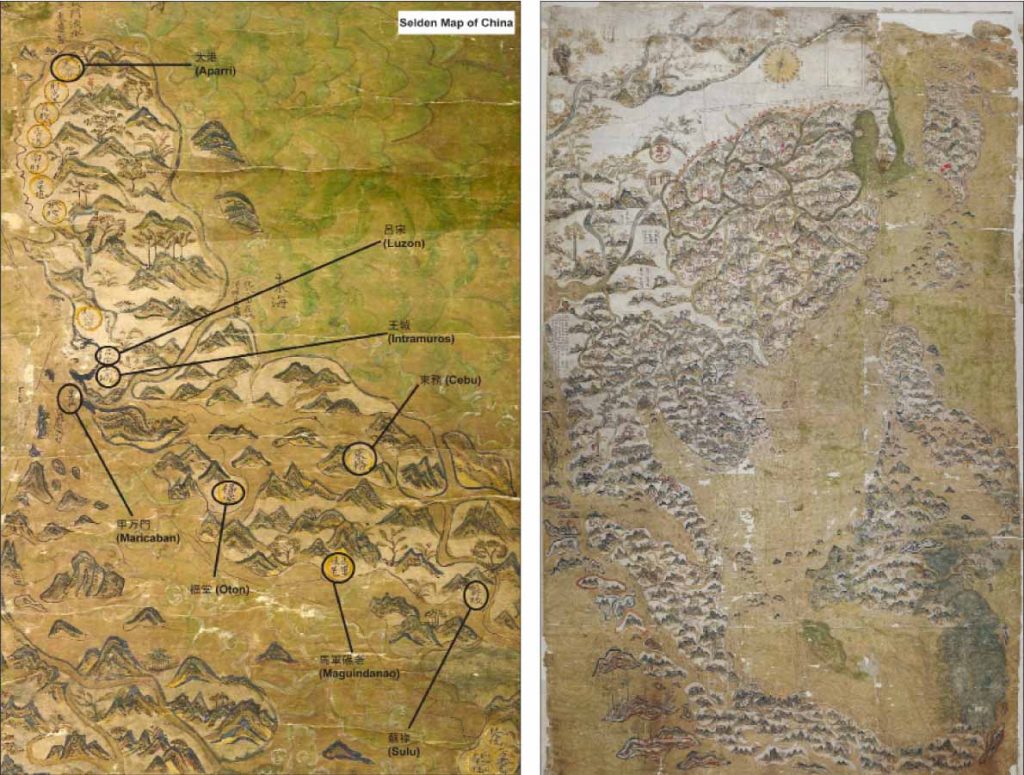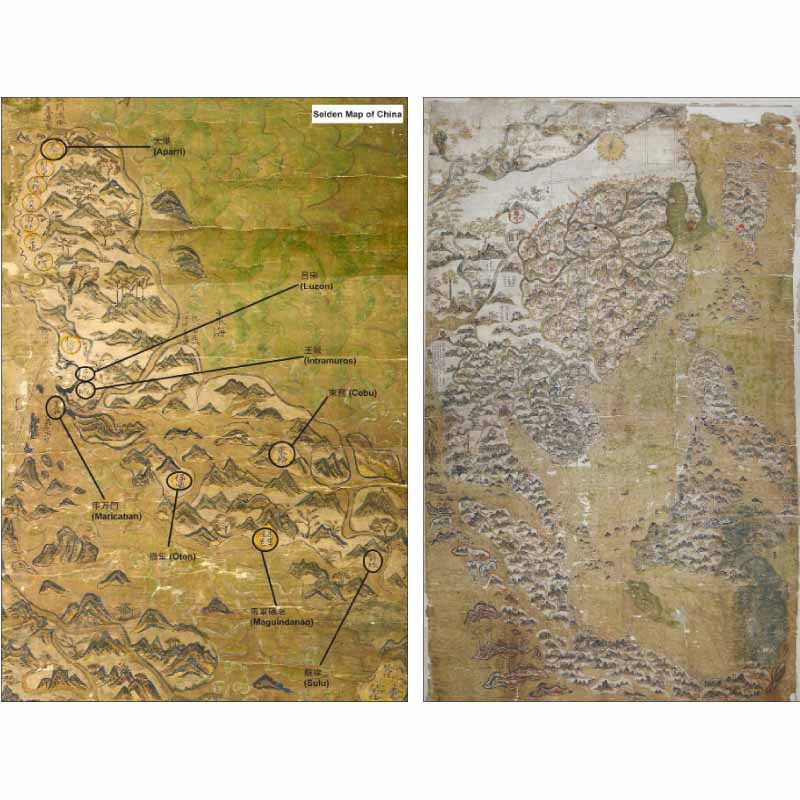
Since American historian Robert Batchelor discovered in 2008 the Selden Map at the basement of the Bodleian Library in Oxford University, scholars cannot agree whether it was made in the Wanli era (1573-1620), after the Dutch occupied the Moluccas in 1621, or sometime in between. But they basically agree that the map dates from the early 17th century.
Also widely debated is the way the map, one of the first Chinese maps to reach Europe, came to be in the possession of an English captain from whom London lawyer John Selden (1584-1654) acquired it. Selden’s estate bequeathed it to Bodleian Library after he died in 1654.
The mapmaker is unknown. Suggestions include an Arab trader who lived in China and a Chinese mariner based in Fujian, China or Java or Sumatra, or quite possibly the Philippines.
Why the Philippines? Because the Philippines that appeared in the map is drawn in detail, with 16 places marked, the most among the Southeast Asia countries drawn on that map.
While reading Early Mapping of Southeast Asia, the Epic Story of Seafarers, Adventurers and Cartographers Who First Mapped the Regions between China and India (Thomas Suarez, Periplus Editions [HK] Ltd., 1999), we came across the following accounts:
When Thomas Cavendish returned to England in 1588, he brought a map he had acquired from the Philippines, but it was of Chinese, not Southeast Asian, origin. (p. 31)
Thomas Cavendish was initially successful, sailing through the Magellan Strait and on to the Philippines in 1588, acquiring a large China map plus notes on navigating in Eastern waters… (p. 200).
Based on the above records, it is almost certain that the map acquired by Cavendish (1560-1592), an English explorer and privateer called “The Navigator,” is the one Selden’s family donated to Oxford’s Bodleian Library.
In the first place, the description of the map Cavendish acquired in the Philippines “was of Chinese origin,” “a large Chinese map plus notes on navigating in Eastern water,” unmistakably conforms to the Selden Map.
Moreover, it is almost impossible that there existed two different kinds of large maps of Chinese origin with notes on navigating in Eastern waters during that time.
Cavendish’s first trip and successful circumnavigation made him rich: He had captured Spanish gold, silk and treasure from the Pacific and the Philippines.
His richest prize was the captured Manila Galleon Santa Ana, a 600-ton sailing ship that held gold and silk worth 100 troy pounds, damasks, musks, spices, wines and supplies. (A troy pound consists of 12 troy ounces. A troy ounce equals 31.1 grams.)
With three ships and 123 men, Cavendish set out from Plymouth, England on July 21, 1586 and reached the Strait of Magellan on Jan. 6, 1587. They emerged from the strait into the Pacific on Feb. 24 and sailed up the coast of South America.
There on the Pacific coast Cavendish sank or captured nine Spanish ships and looted towns of fresh food, supplies and treasure.
Cavendish crossed the Pacific Ocean and arrived in Guam on Jan. 3, 1588. He then proceeded to the Philippines where he attacked Arevalo, the capital Spanish settlement in Iloilo.
The raid gave the town the distinction of being the first Spanish settlement in the Philippines to be attacked by a British pirate. It was also the first recorded British incursion into Philippine waters.
Cavendish sailed back to Plymouth on Sept. 9, 1588 and was knighted by Queen Elizabeth I of England.
The Spaniards transferred its seat of power in Iloilo from Oton to Arevalo in 1581. This transfer corresponded with the birth of a Chinese quarter in Arevalo that was closely connected to Spanish colonial efforts in destroying its adversaries in the south.
The Chinese community in Arevalo actively participated in the launching of numerous expeditions in Mindanao, Sulu and Moluccas as skilled rowers of galleys and makers of sampan utilized as ammunition storage during encounters at high seas.
The Arevalo metal shops were also home to Chinese artisans manufacturing cannons, cannon balls and other pyroclastic implements used in war. They also produced agricultural tools such as metal plows and sugarcane crushers.
Since Arevalo appears to be the only place in the Philippines that Cavendish ever reached, it might be safe to assume that the Chinese map he acquired in the Philippines was from the Chinese community in Arevalo, possibly as a loot.
